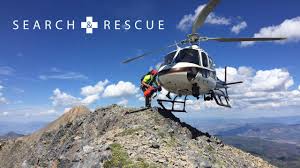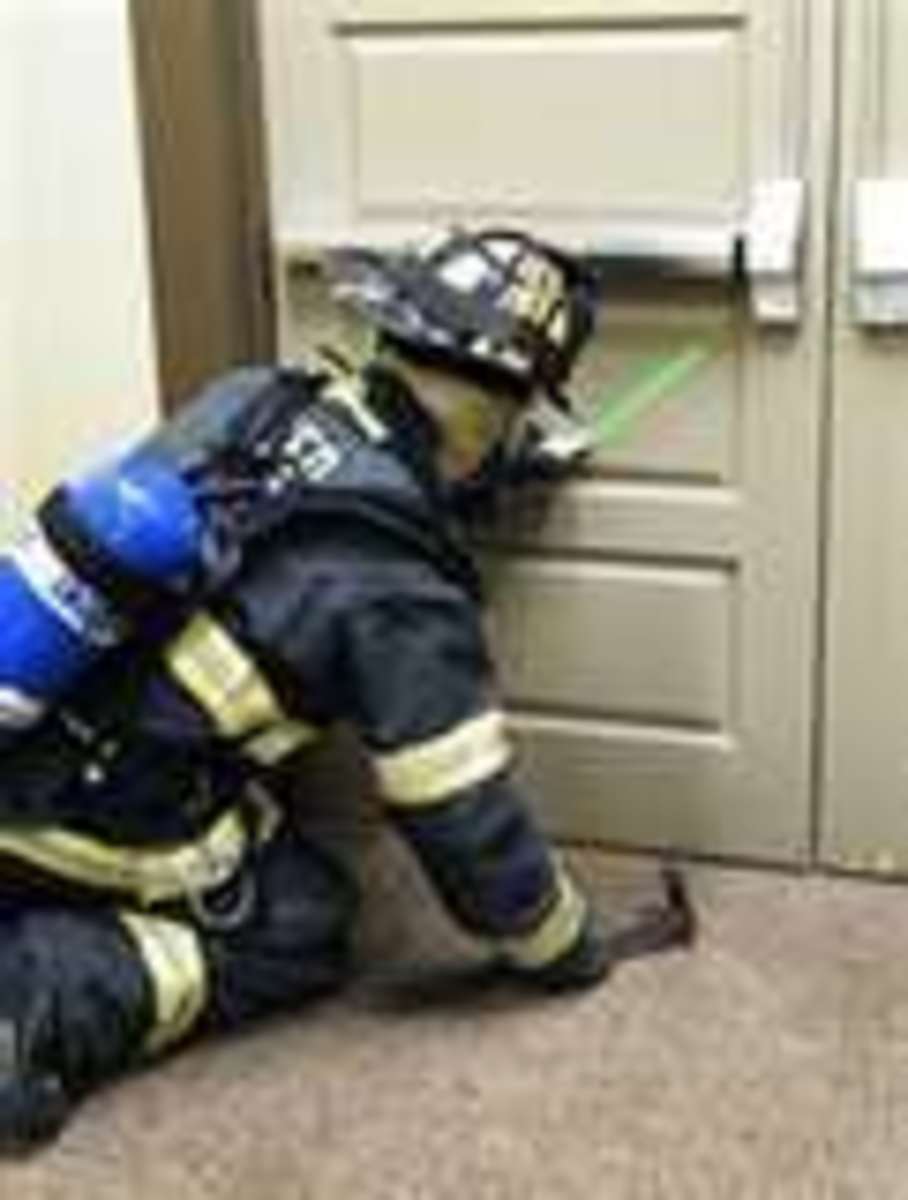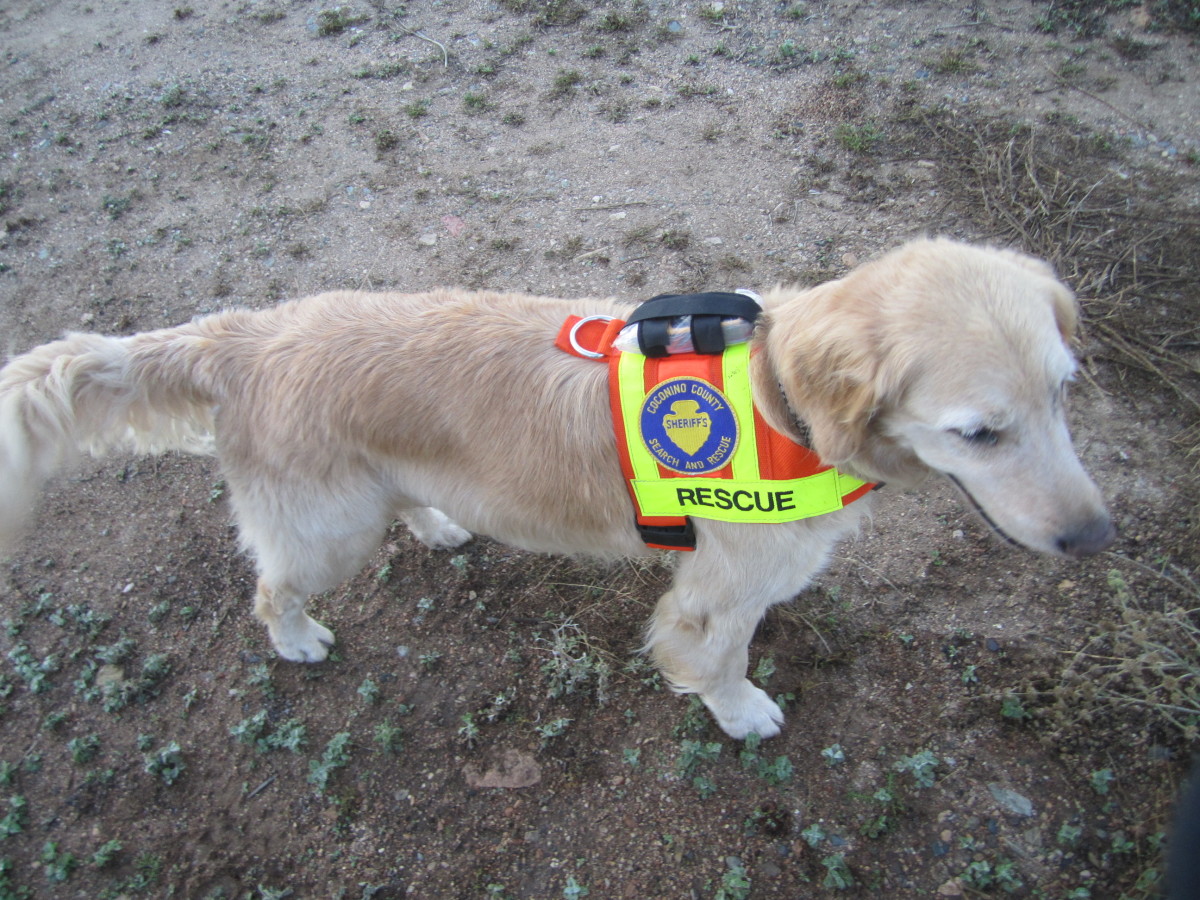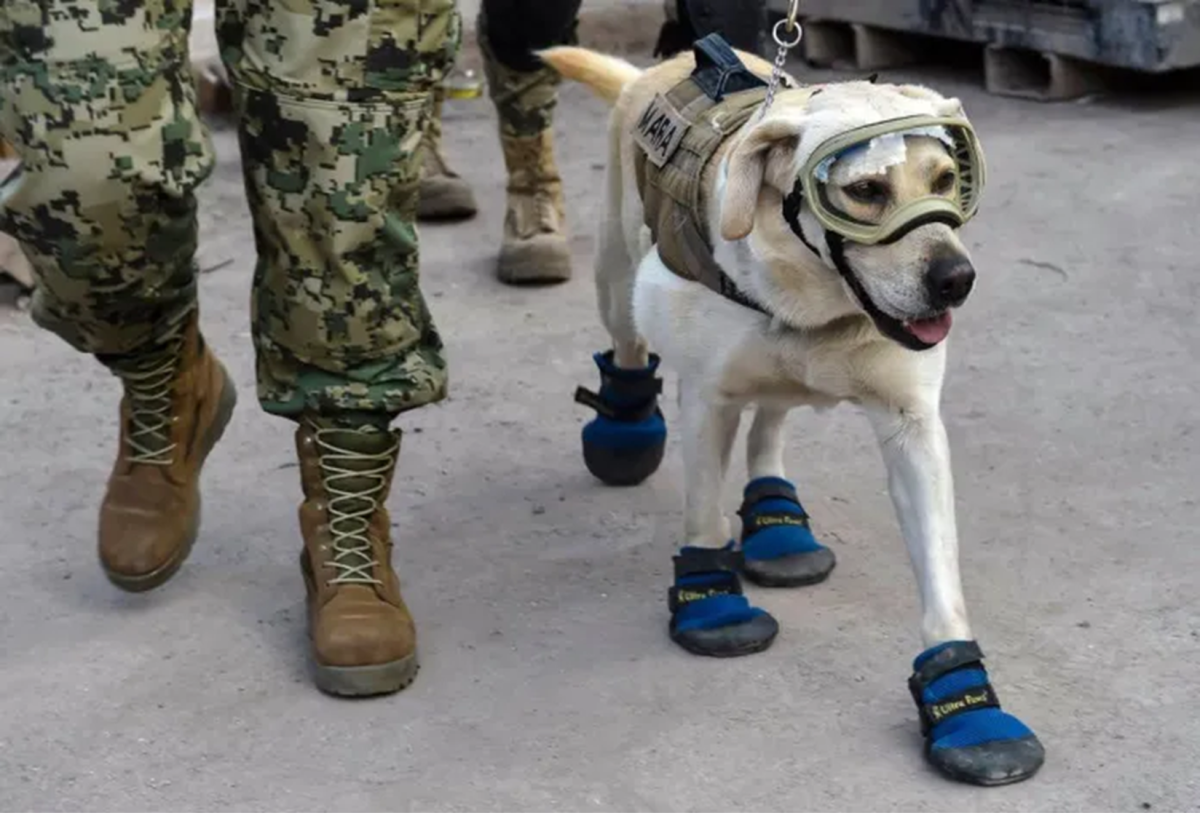Search & Rescue

Search and Rescue: Institutional Portrayals
Search and rescue workers are often highlighted in the media after huge rescue missions that portray the volunteers as “heroes” however, the day to day life of a search and rescue worker is anything but glamorous. In a career riddled with emotional repression, life-risking circumstances, and time consuming tasks, many volunteers never get to the chance to partake in “big” rescues that make headlines. Most of the time the only pat on the back volunteers get are from themselves or the agencies they work for. Since search and rescue agencies are informed of all missions rather than just the successful ones, their insight into search and rescue volunteers is unfettered, surpassing the credibility of the media. Keeping this full-access in mind, it brings up the question of how search and rescue workers are portrayed by the institutions that employ them. By answering this question, I hope to understand the values of the institution as reflected by the safety measures placed for the physical and psychological well-being of their employees. To investigate this topic, I researched ten search and rescue agency websites throughout the U.S. and preformed a qualitative analysis of their postings.
Literature Review
Waking up before the sun, trudging across rough waters, and combing through acres upon acres of harsh terrain are just some of the responsibilities of search and rescue workers. These brave volunteers sacrifice hours of their time not only during missions, but also on the training necessary before they can go into the field. There are a variety of training classes available for a wide range of situations thus many volunteers chose to take multiple classes, all of which are paid for by the volunteers themselves. Search and rescue workers are also expected to pay for most of their equipment out of their own pocket and are required to keep their equipment in pristine condition on their own time. While search and rescue agencies do provide some technology for their workers, most of the fiscal strain is taken on by the volunteers themselves who receive no financial compensation for their efforts (Irvine 2004).
On top of the time and financial strain, there are a lot of emotional sacrifices volunteers must make to last long in the search and rescue field. Previous studies considering the role emotion plays in search and rescue have found that for missions to run smoothly, workers are expected to suppress any emotional response they might feel whether it be excitement, fear, or hope. Once the mission is completed, whether a success or failure, volunteers are left to their own devices to cope with the euphoria of triumph or the devastation of trauma. Not only are the volunteers responsible for their own emotions, but the burden of appeasing the families of the victims as well as the victims themselves often falls onto search and rescue workers. Most victims feel embarrassed for getting themselves into situations where they need to be rescued thus, workers use a “protective practice” to redefine the situation. For example, if a hiker were to wonder off the trail and get lost, a search and rescue volunteer might pacify the victim by assuring them that this situation happens all the time. When dealing with the families of victims, workers use a skillset called “compressed intimacy” where they attempt to balance hope with reality and validate any other feelings that family members might experience (Irvine 2004).
Since the field requires a lot of sacrifice, a lot of new members burn out at the beginning. Because of this low retention rate, the field of search and rescue has its own process of socialization among members. For new members to prove themselves, they are expected to go through three stages of socialization before they can earn the coveted status of “core member” as well as the rewards that accompany this elite label. The first stage is consciousness where members deny their own self-interests and accept any role the group assigns no matter how small or challenging. The second stage is the resource stage where members participate in training and maintain proper care of their equipment. The last stage is known as the commitment stage which is when the members put in a level of effort that goes beyond seeking personal glory. Once this stage has been reached, members are bestowed symbolic rewards such as comradery and acceptance of other proven members as well as the label of “hero.”
Researcher Jennifer Lois experienced this socialization amongst “hero” status individuals during her three-year involvement with the Peak Search and Rescue unit. She writes that socialization processes are especially salient in high-risk organizations because “the performance of crucial life-death functions requires a strong emphasis on norms and values that generate high levels of solidarity (Lois 1999).” Since search and rescue volunteers are in a dangerous and “high-risk” field, there is a greater emphasis on explicit group conformity and socialization. Lois continues to write that when she first joined the group she found it “very difficult to gain acceptance by other group members, who were suspicious of her motives for joining. They [the volunteers] regarded her as having nothing to offer and though she might be seeking increased community status by affiliating with Peak (Lois 1999).” Per her research, to become an “active” member of a hero socialization group, she concluded that one must internalize the groups most crucial norms and values which she identified as “consciousness, resources, and commitment.” For outsiders, the lure of this esteem makes membership and the accompanying “hero status” even more desirable. However, when the group’s prestige is combined with its voluntary nature, the exclusivity of the “hero status” becomes endangered. “Indiscriminately granting hero status to anyone who volunteered could dilute the prestige of membership, so Peak conferred esteem only on members who worked diligently to gain core membership along the three dimensions (Lois 1999).” Thus, while the socialization process is more demanding for the high-risk search and rescue volunteers, the resulting status and prestige is used to enforce the importance of conformity amongst its core members which would be the difference in a life or death situation.
Due to the highly traumatic and dangerous nature of search and rescue, the agencies that employ these volunteers have certain responsibilities in respect to safeguarding both the psychological and physical safety of its workers. Many agencies advocate the need for effective training classes, up-to-date equipment, counseling services, and the use of unmanned drones as safety precautions. Previous studies have supported the claim that “improving the professional knowledge and practical experience of rescue workers is beneficial to eliminate and mitigate the adverse psychological at the scene of disaster rescuing, can effectively avoid the occurrence of secondary and derived disasters, and protect the physical and psychological safety of rescue workers (Lu 2014).” While training and preparation are essential before the start of a mission, proper trauma counseling should also be included as a post-mission requirement since studies have shown that 75.5% of the post-disaster relief workers have mild symptoms of psychological trauma (Lu 2014). Since emotion can have such a large impact on rescue workers’ occupational safety, there should be resources set aside to deal with the effects a failed mission can elicit in volunteers.
Volunteering is the foundation of many search and rescue agencies therefore safety is a vital institutional concern to retain a large workforce. To determine how to properly care for its workers and provide proper motivation, agencies must first examine the employees themselves and the strains they face to determine what works best. This paper seeks to answer the question of how search and rescue workers are portrayed by the institutions that employ them. By answering this question, we hope to understand the values of search and rescue institutions as reflected by the safeguards they put in place for their employees. I expect that the language used at the institutional level will reflect an emphasis on the importance of proper training, advertising the latest technology, and a warning to beginners about the dangers of the field both physically and psychologically since these are all concepts previous studies have agreed are the responsibility of the institution.
Methods
To understand how search and rescue institutions portray their workers, I examined the company websites of several American based search and rescue agencies. The websites ranged from small county jurisdictions to large state-wide agencies. I chose to collect my data directly from agency websites since I am exploring how search and rescue institutions portray the individuals that work for them. I chose company websites from a large database that listed several agencies and then used a random number generator to determine which agencies on the list to include in my analysis, apart from one company (BERTS) which I have a personal connection with and plan to use for a more depth, interview analysis. Most of the websites included a mission statement that helped distinguish the values of each agency. Since all the data I collected came straight from the source, the data is credible and therefore truly reflects the ideals of the institution. The collection of data was also made easier since every agency website was accessible by the public.
As I shifted through ten separate search and rescue agencies across the United States, I created several codes for sections of text that I felt accurately corresponded with my research question. I then grouped several of these codes together to form three sub-themes. Once I had the subheadings, I further categorized the concepts into two themes: institution and individual. The Institutional theme includes everything that the institution offers its workers such as training and technology as well as the values of the institution including safety and its mission statement. The individual theme includes the costs and rewards that everyone goes through as a search and rescue employee, such as personal sacrifices and testimonials of successful missions.
During the coding process, I utilized both deductive and inductive reasoning. To create each separate code, I would analyze a portion of text from an institution’s website and then use deductive reasoning to take a general premise and break it down to a specific conclusion. For example, if there were a large portion of text about the technology available to search and rescue workers, I would deduce that the section of text was addressing equipment concerns. Once I had several codes, I would look at patterns and recurring themes among the codes to create a broader subtheme and then even broader themes. For instance, I combined the codes “worker sacrifices” and “testimonials” under the larger subtheme, “costs and rewards.” Using both deductive and inductive reasoning, I was able to properly code the data from the agency websites into manageable themes.
Findings
Services offered by institution
Through careful examination of each agency website, there emerged a common theme of services offered by the institution to its workers. Every agency website advertised multiple training classes that potential search and rescue volunteers could take. While the volunteers have to pay for the classes out of their own pocket, the institutions provide a setting for training, competent instructors, and a certificate once the class is complete. Only some classes are required before a volunteer can officially join the search and rescue team, most of the classes are elective and designed to further develop survival skills such as map reading and first aid. While each agency requires at least one certification course for membership, there is no standard training requirement across the board. The jurisdiction’s climate and terrain also have a large impact on what courses are available. For example, Teton County Search and Rescue offers a snowmobile repair class due to the large volume of snowmobile accidents that occur in its territory (Estes 2016). The amount of training courses offered, both elective and required, show the public that the volunteers of each agency are competent and have the certifications to prove their skills.
Like training courses, most agency websites advertised the equipment and technology available to their volunteers. Most equipment is bought by the volunteer through the agency however there are some products such as bunkers and GPS technology that is donated to the agency or developed by the agency itself that is available for general use. The Rocky Mountain Rescue website promoted their equipment on their “About” page when they wrote, “We use as much commercial rescue equipment as possible. In some cases, there is not a commercial product available that meets our rescue requirements. In these cases, we will develop our own equipment (Shots 2017).” By promoting their technology to the public, each institution exemplifies that they are up to date with the best supplies available to equip their volunteers and most effectively help potential victims.
Institutional values
Several agency websites displayed a mission statement to summarize the goals of the agency. All the mission statements expressed a desire for its volunteers to be prepared and promoted the service of others. I believe the BERTS motto “this we do, so others may live” exemplifies this shared belief in the simplest of terms (Whaley 2017). Mission statements are important for agencies because they show the public why the company exists in the first place. It also serves as a general statement of agreement between the employers that set the goals and the employees that strive to achieve them. Employers would not openly advertise a mission that they didn’t think their employees could deliver.
Along with a mission statement, several agencies set aside a portion of their website to endorse the volunteers themselves. This section was typically utilized to emphasize how highly trained the volunteers were, similar occupations workers had such as military service or law enforcement, and the caring personalities of those risking their lives to help others. Unita County Wyoming’s website sang high praise of their volunteers when they wrote, “Our Search and Rescue members are dedicated volunteers, who give of their time, hearts, and talents to serve their neighbors, and community. Their only reward is the knowledge that they have helped their fellow person who was in need (Estes 2016).” Devoting space to discuss the workers, show how the agency itself perceives its workers and thus the lengths that institutions will go to keep their employees safe and driven.
Since search is rescue is such a dangerous field, it is very important to have safeguards in place to protect both the physical and psychological well-being of the volunteers. For this reason, many agencies advocated many levels of training beyond simply what was required such as, risk management techniques, proper communication courses, as well as extensive equipment tests. Highlighting different safeguards shows the public that the institution values safety and therefore will go to great lengths to assure the well-being of their employees.
Costs and rewards
Search and rescue workers are often forced to make sacrifices to survive in this dangerous field. Whether it be the time they could be spending with their families, the financial burden of training courses, or the environmental perils they face during missions, these volunteers give up a lot in the service of others. These sacrifices do not go unnoticed by institutions as can be seen on several agency websites that highlight the burdens that search and rescue entails. Rampart Search and Rescue briefly touches on the time commitment aspect on their website when they wrote “we are on call twenty-four hours a day, 365 days a year, regardless of weather conditions or circumstances. We are a non-profit, totally volunteer organization that depends on the support of the community, grants and fundraisers to maintain operations (Rampart 2019).” It is important for the agencies to include the sacrifices of their workers to discourage any freeloaders who might sign up in search of personal glory. Other studies have also exemplified that warning potential volunteers of the dangers of search and rescue is a vital responsibility of the institution.
Another section that kept recurring throughout the different agency websites were testimonials. The testimonials were always based on successful missions such as one undertaken by Rocky Mountain Rescue when they “completed a vertical evacuation down the north face of the Bastille” to save an injured climber trapped on a cliff formation in Eldorado Canyon State Park (Shots 2017). Phrases such as “successful,” “heroic,” and “saving lives” were consistently woven throughout the testimonials of most of the agency websites. Testimonials are essential because they provide hope in a field often ridden with failure. Institutions must recognize when their employees are successful to improve morale as well as validate the work that volunteers do. By advertising success stories on agency websites, workers are encouraged and therefore motivated to stay in an otherwise frustrating career field.
Discussion and Conclusion
I began my research with the hope of understanding the values of search and rescue institutions through examining the language they use on their websites to reflect the values and safeguards they put in place to protect the physical and psychological well-being of their employees. For the most part, the findings of the content analysis supported my initial expectations of the language search and rescue institutions would use to portray their volunteers. I anticipated that agency websites would place an emphasis on the importance of proper training, modern technology, and warning potential volunteers of the dangers of search and rescue. Since previous studies have all suggested that these three points are the responsibility of the institution, I expected that most the websites would touch on these issues.
The findings also reflected a heavy portion of text was dedicated to services offered by the institution such as training and equipment, the values of the institution such as the physical safety of its workers, and the costs and rewards associated with search and rescue workers which could be considered as a warning for prospective volunteers. Therefore, all my expectations were met in depth across several agency websites. While I did expect for the websites to communicate the importance of physical safety, I assumed that the institutions would do so in a more indirect fashion by highlighting the significance of training and equipment, however, most websites communicated the importance of safety directly and as its own topic rather than a consequence of institutional services. While I did not expect this emphasis on physical safety to appear in such a straightforward style, I appreciated the institutions candor and how this directness reflected on the values of the agency.
As the Irvine article discussed, there are a lot of emotional suppressing factors involved with search and rescue that can severely damage the cognitive abilities and psychological well-being of volunteers. Despite the alarming statistic that 75.5% of post-disaster relief workers experience PTSD symptoms, there was no explicit mention of mental health services offered by the institution. Every mention of “safety” was followed by an emphasis on psychical rather than psychological well-being. This disregard for mental health was clearly noted amongst all ten of the agency websites however previous studies have seen an increased amount of services being put in place in recent years to address PTSD and other trauma related psychological disorders that are common with search and rescue workers (Lu 2014).
A future studying relying on qualitative interviews with high-level search and rescue officials could better encompass what authority figures within the institution think about the volunteers that work under them. This insight would be helpful because rather than deducing information from several documents and trying to piece together meaning from agency websites, I could directly ask questions to a well-informed officer of the field. The data from these interviews would further advance and compliment the findings from the websites because both I would be able to analyze both information from the institution itself and high level officials that can offer a more personal perception of the volunteers.
Works Cited
Estes, Mike. 2016. “About Us.” Teton County Search and Rescue. Retrieved January 31, 2019 (http://www.tetoncountysar.org/#).
Irvine, Leslie. 2004. “Book Review.” Qualitative Sociology Vol. 27 (4): 531-535.
Lu, Jintao, Naiding Yang, Jinfu Ye, and Haoran Wu. 2014. “The Influence Paths of Emotion on the Occupational Safety of Rescuers Involved in Environmental Emergencies- Systematic Review Article.” Iranian Journal of Public Health 43(11).
Lois , Jennifer. 1999. “Socialization to Heroism: Individualism and Collectivism in a Voluntary Search and Rescue Group.” Social Psychology Quarterly 62(2):117–35.
Rampart. 2019. “Search and Rescue.” Rampart Search and Rescue. Retrieved January 29, 2019 (https://www.rampartsar.com).
Shots, Aaron. 2017. “About.” Rocky Mountain Rescue Group. Retrieved January 31, 2019 (https://www.rockymountainrescue.org/about/).
Stein, Evan. 2015. “Search and Rescue.” Unita County Wyoming. Retrieved January 31, 2019 (https://www.unitacounty.com/102/search-and-rescue).
Whaley, Jerry. 2017. “About.” Buckeye Emergency Response Training School. Retrieved January 29, 2019 (https://b-e-r-t-s.com/aboout/).








